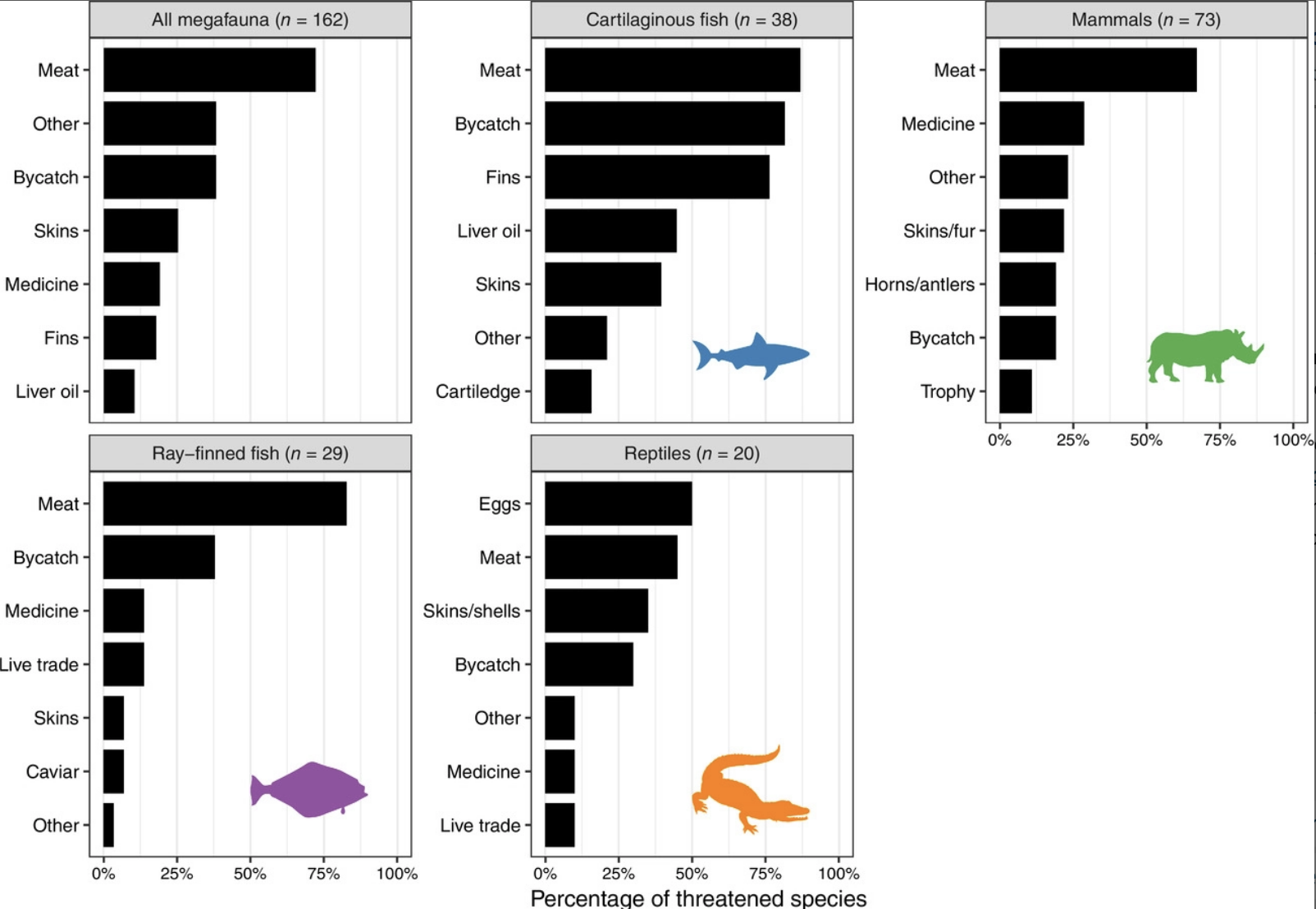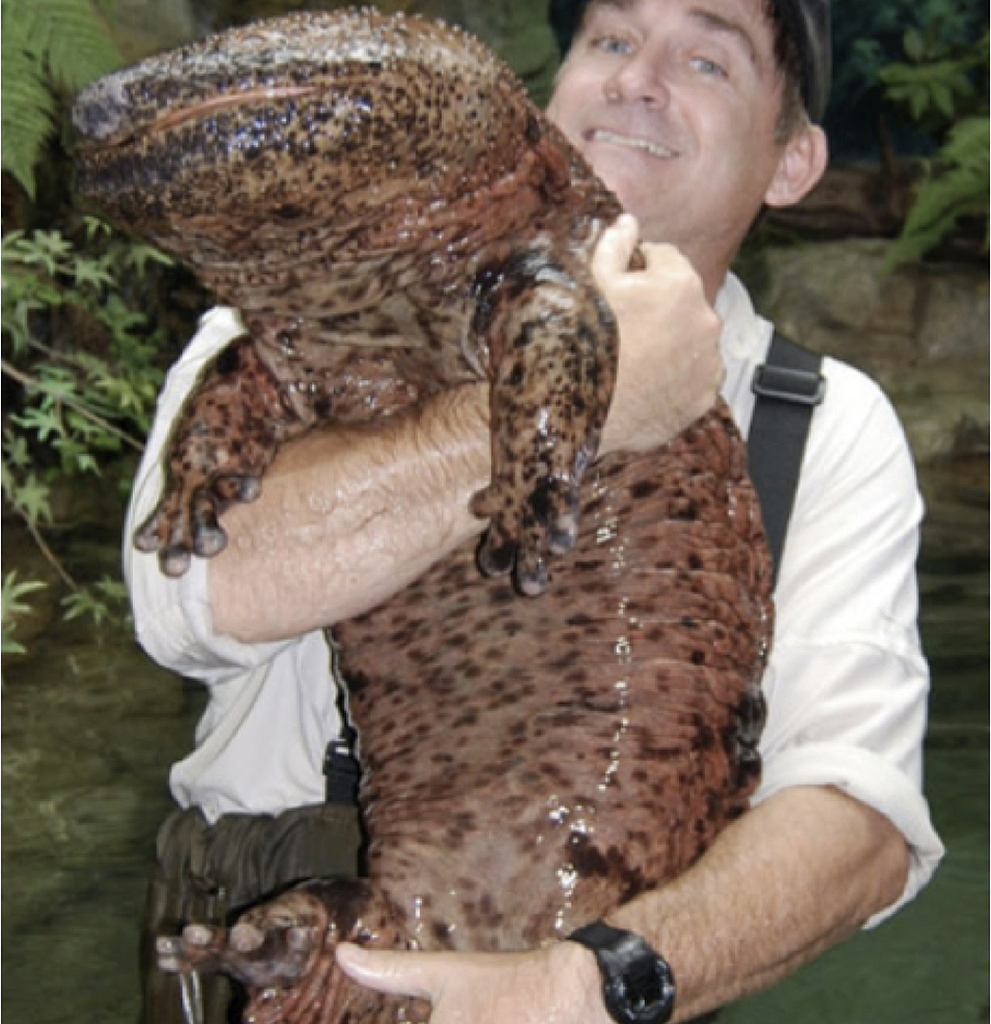Humans are in the process of herding the world's largest animals right over the brink of extinction, and the main driving force is our insatiable appetite for meat.
It's a dire warning, and it comes from the first analysis to look at how humans have impacted the world's "megafauna".
Bringing together over 300 species of unusually large vertebrates – including polar bears, blue whales, hippos, saltwater crocodiles, ostriches – the findings illustrate a woeful future for our shared environment.
All told, at least 200 megafauna species are dwindling in number, and more than 150 are being pushed under the shadow of extinction.
"Our results suggest we're in the process of eating megafauna to extinction," says lead author William Ripple, an expert in ecology at Oregon State University.
"In the future, 70 percent will experience further population declines and 60 percent of the species could become extinct or very rare."
If humans choose to continue on this path, the loss could jeopardise the planet as we know it. Biodiversity is essentially the variety of life that holds up all the ecosystems in the world, but after millennia of unchecked actions, humans are now facing an environmental crisis.
Imagine it like a game of Jenga. The more pieces we remove, the more unstable the whole system becomes, only increasing the threat of collapse.
"Maintaining biodiversity is crucial to ecosystem structure and function, but it is compromised by population declines and geographic range losses that have left roughly one fifth of the world's vertebrate species threatened with extinction," the authors write.
The problem has been building up for a while now.
Ever since the late Pleistocene, over a hundred thousand years ago, humans have wreaked havoc on the world's biodiversity, sending large vertebrate after large vertebrate into the abyss of extinction, at a rate not seen in the previous 65 million years.
But in the past 500 years or so, things have started to speed up, and it's got scientists worrying. Today, every single class of megafauna is most at risk from human hunting.
In fact, of all the threatened megafauna species, 98 percent were at risk from "direct harvesting for human consumption of meat or body parts."
 (Conservation Letters)
(Conservation Letters)
Not only do these large creatures hold more meat and potentially more glory, they are also less abundant than smaller species and they reproduce much slower.
This puts large vertebrates at exceptional risk of extinction, not just from hunting, but also from the degradation of their habit.
"Megafauna species are more threatened and have a higher percentage of decreasing populations than all the rest of the vertebrate species together," explains Ripple.
So even though megafauna have a small, collective biomass, their ongoing loss is already changing the structure and function of our ecosystems, in ways that we are still discovering.
In the past 250 years, we know that nine megafauna species have either gone extinct completely, or gone extinct in the wild. The animals with the greatest threat are those on land.
This is no doubt because humans can reach them easier. For instance, in 2012, two species of giant tortoise disappeared, and two species of deer.
Marine creatures have it marginally better. Only 27 percent of the species are assessed as threatened, but there are also more than two dozen that we just don't know enough about to say.
Bony fish, like sharks, skates and rays are at the top of the list, more at risk on average than any other marine group.
Yet in the end, it was those large creatures who frequent both the land and the sea that saw the worst outcomes. Of all the mega amphibians, only one species remains on Earth.
Weighing in at 40 kilograms and stretching up to 1.8 metres, the Chinese Giant Salamander (Andrias davidianus) is sometimes called a living fossil, one of the few survivors in a family that dates back 170 million years.
Considered a delicacy in Asia, it is now critically endangered and scientists say it is only a matter of time before it too disappears.
 (James Joel/Flickr/CC BY 2.0)
(James Joel/Flickr/CC BY 2.0)
Afraid that more creatures are headed in the same way, the authors urge that "our heightened abilities as hunters" be matched by "the sober ability to consider, critique, and adjust our behaviors."
Otherwise, we might end up eating the last of our planet's megafauna.
"Preserving the remaining megafauna is going to be difficult and complicated," says Ripple.
"There will be economic arguments against it, as well as cultural and social obstacles. But if we don't consider, critique and adjust our behaviors, our heightened abilities as hunters may lead us to consume much of the last of the Earth's megafauna."
This study has been published in Conservation Letters.
Read Again https://www.sciencealert.com/humans-are-quickly-eating-the-world-s-largest-animals-to-extinctionBagikan Berita Ini















0 Response to "We Are Eating The Planet's Last 'Megafauna' to Extinction - ScienceAlert"
Post a Comment